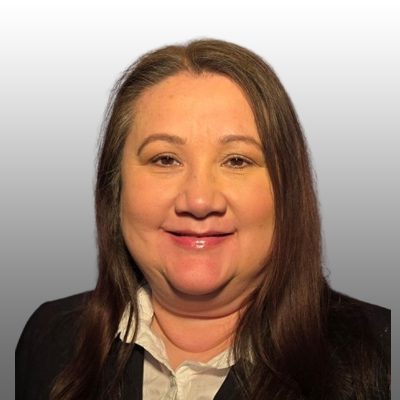Marketplace Fairness Act – Who Does it Help?
Recently, our blog introduced the Marketplace Fairness Act and explained that it is a piece of proposed legislation currently being considered by Congress. In our first blog post, we dove right into the basics associated with the Marketplace Fairness Act, and today we continue uncovering more on the topic by introducing both pros and cons of the controversial act.
As a refresher, The Marketplace Fairness Act as currently proposed (but not yet passed) would allow states to enforce the collection of sales tax from remote vendors selling into their state, whether or not the retailer has nexus (taxable presence). Remote vendors include online and catalog focused sellers like Amazon and Ebay or “Mom & Pop” Internet retailers. Read more
California's New Tax Incentive? Jury Still Out.
California recently enacted a three pronged tax incentive program which benefits companies beginning in 2014. The newly established California Competes Tax Credit reached its first milestone, as the State accepted applications through the April 14, 2014 deadline. According to the California Governor’s Office of Business and Economic Development (“GO-Biz”), over 100 applications were received for the $30 Million in allocated credits for the fiscal year ending 6/30/14. The companies that applied on-line for the tax incentive will now be vetted by representatives from Go-Biz to see if they make it to Phase II and then ultimately receive tax credits. A hearing of the California Competes Tax Credit Committee is scheduled for June 19th in Sacramento to decide the final recipients.
So, what is the California Competes Tax Credit?
The California Competes Tax Credit is a recently enacted income tax credit available to businesses that plan to relocate to the Golden State OR for companies already in the state planning to expand California operations. Read more
Marketplace Fairness Act - Ebay, Overstock and Amazon, Oh My!

The Marketplace Fairness Act is a proposed piece of legislation recently being considered by Congress that has the heads of many spinning in confusion. In today's blog post, we introduce the basic details of the Marketplace Fairness Act and how it could affect you and your business if ultimately enacted.
3 Marketplace Fairness Act Questions:
1. What is it? The Marketplace Fairness Act is proposed legislation being considered by the US Congress that would allow individual states to encourage the collection of sales tax from remote vendors. Remote vendors include large online and catalog focused sellers like Amazon and Ebay, as well as smaller “Mom & Pop” internet retailers., which is the reason the proposed Act is controversial. It’s difficult to find a “one size fits all” solution. Read more
Commentary on the Demise of California EZ program
In the spirit of not being too negative or bitter, I have sat on my fingers for the last several weeks and purposely decided NOT to blog about the recent passage of AB93 – the California state law that eliminates enterprise zone benefits in our state. There are plenty of places that you go to find spin, one way or another around the “benefits” of the new law, but you won’t find that here. That’s because our business and our clients will be negatively impacted by passage of this law. Sure – that’s a little selfish of me, to think about me and my clients. But I also don’t buy that this new law is a benefit to very many businesses. In fact, I believe that, aside from the sales tax manufacturing exemption, very few companies will benefit at all. And I think that’s bad for business, bad for the California economy, and another check in the column that our state is not business-friendly.
Part of my frustration in the process is that this bill (a trailer bill that was blank in the hours after the passage of the budget earlier in June) was drafted, presented, and passed within the span of about 72 hours during the last week of June. The legislation (which still begs several administrative questions) was over 100 pages long. The ink on it was barely dry when the Democrat-controlled Senate voted on it. By the time the bill was voted on in the Assembly, the demise of the EZ program was already a “given” because supporters of the bill had strong-armed opponents and were weighing down heavily on those who would vote against it. A program that was alive, vibrant, and creating jobs in California was eliminated under a clever new bill promising "wonderful" new benefits to California businesses. It’s important to note that AB93 was a tax increase, needing a 2/3 majority in both chambers. It was a tax increase because deductions and tax credits were eliminated. In the press since then, there is little discussion of that fact. But, make no mistake, AB 93 takes away tax benefits = it’s another tax increase in California.
Quickly – the summary of the bill:
The only “good” part of AB93 - The bill implements a sales tax exemption for manufacturers for property purchased and used in the manufacturing process, beginning in 2014. As originally drafted and passed by the Senate, this exemption was to be only a five-year benefit, but in the final Assembly negotiations, it was extended to nine years. Such an exemption should have been in place years ago to put California on parity with most other states that already offer an exemption for manufacturing equipment. While many companies will benefit from this exemption, this law change was not related to hiring individuals and should not have been the catalyst for repealing the EZ program. Also, it sunsets. Shall we take bets whether it will be renewed after that time?
The bill repeals the existing EZ Hiring Credit, EZ Sales/Use Tax Credit and EZ Net Interest Deduction for Lenders as of 12/31/13. EZ credits generated will carry forward for ten years (rather than indefinitely) and EZ Hiring Credit benefits will continue to accrue until the qualified employee is no longer employed or reaches the full five years. But there will be no future benefits.
AB 93 "replaces" the EZ program with a statewide hiring credit with many limitations that will make qualification all but impossible for most employers. The new rules require all of the following:
- Companies must fall into qualified SIC codes (mostly manufacturing), and do NOT include retail and eating establishments;
- A net increase in new employees calculated by using a base;
- Qualified wages must be between $12.00 and $28.00 per hour, based on 150 and 350% of California's minimum wage; and
- Only full-time employees will be considered for the hiring credit and must qualify under one of four criteria (versus the 13 qualified criteria used now):
- Unemployed/displaced worker;
- A U.S. military veteran:
- An ex-offender; or
- Recipient of the Earned Income Credit.
To further add to the complexity, businesses seeking to claim these credits must request a "tentative credit reservation" with the Franchise Tax Board "FTB" within 30 days of the employee's date of hire, and must submit an annual "certification of employment" for each full-time employee to remain eligible for the credit during the 60-month credit period (With the many limitations and bureaucratic hurdles, we believe that very few companies will qualify for the credit. A perfect storm will need to be created for the credit to have any meaningful value to a company. We believe that the new program will not serve to increase or incentivize businesses to keep employees. It's simply a "program" so that the Governor can say that he has a hiring credit).
Finally, AB 93 creates a "slush fund" - currently a $30 million set-aside for negotiated incentives for which companies will compete if they expand business within the state. Company applications will be evaluated by a 5 member board established by the Governor. This fund is expected to grow to $200 million in future years. (One of the Governor's big objections to the EZ program was that it had some perceived abuses. He has now replaced it with a slush fund that will be overseen by only 5 individuals in a plan that is very short on details. If this is not a program that is rife for potential abuses, we're not sure what is. The projected cost of the EZ program, which benefited thousands of companies in every industry across the state, was estimated at $750 Million annually. With this legislation, the Governor has diverted a third of that amount into a very limited program, with limited oversight, potentially benefitting very few companies.)
We thank all of our clients and friends that reached out to legislators in the final hours of negotiations on AB93 and made their voices heard. Unfortunately, there weren't quite enough of us to convince the political machine in Sacramento to stop and reconsider this bill. But we applaud everyone's efforts!
Sales Tax 101 - Where is Main Street?
After many years of practicing in the multi-state tax world, it’s interesting to me to finally find the topic of sales tax in the mainstream media almost daily. There is considerable buzz about a proposed new federal law to require retailers selling goods over the internet to collect sales tax. Various versions of this law have emerged in the last several years under the monikers “Mainstreet Fairness Act” and “Marketplace Fairness Act”. The latter has recently come into the limelight as the US Senate has voted (May 6, 2013) to approve a law which would significantly impact internet retailers – requiring those with sales of over $1Million to collect and remit sales tax from their purchasers, whether or not the company has nexus (taxable presence) in the state of the purchaser. The proposed law has currently stalled in the US House of Representatives.
Many people are referring to this as the “Internet Sales Tax”, but it’s really not a new tax at all – it’s just shifting the burden of who collects and remits the tax. Sales tax has a complementary “use” tax. The way it stands now (before the passage of the law), if you are an individual and purchase something online and are not charged sales tax, you as the individual are still liable for the use tax (at the same rate) on that purchase. Most states allow you to declare and pay that on your individual income tax return. So, the tax is already due. Most people just don’t pay it. What this law attempts to do is to require the seller to collect and remit the tax so that the states get the money that should have been collected from the purchaser. In theory, it’s easier to collect from one seller than from thousands of consumers. So, again, this is not a proposed new tax – the tax has always been due. This proposed law changes the burden of collection to the seller rather than the purchaser.
There are several reasons why, as either sellers of products or consumers of products, we should care about this proposed law. Here are a few:
1.) The US Congress, which has the right to regulate sales in interstate commerce (a seller in one state and a buyer in the other) has not acted on that right since the 1950’s. The internet became mainstream in the 1990’s, increasing interstate commerce, and now Congress is finally taking a look. Why?
2.) We will all be impacted in some way. Whether we are companies on the collection side, or consumers, we will feel some “pain”.
3.) Many large companies are supporters of this legislation, including both “brick and mortar” stores and internet retailers. Yet the law is likely to impact smaller retailers the most. Should we be concerned about that?
4.) The minimum threshold for compliance (currently at $1Million in revenue) seems like big number. But for retailers, is it big enough to support the tax compliance burden that will accompany reaching that threshold?
5.) The law currently promises a streamlined approach to filing, offering companies a “one-stop” type approach and software that will assist with compliance. Do we really believe the additional bureaucracy plus software offers anyone the illusion of “streamlined”?
Stay tuned as we explore some of the nuances of the proposed law and how it is likely to affect all of us that buy (or sell) over the Internet.
Introduction to Labhart Miles Blog
Welcome to the new Labhart Miles blog.
In this space, we'll be talking about multi-state tax issues, California enterprise zone issues, and interesting general business issues that come to mind. Thanks for welcoming me into the blogosphere!
I hope you'll join the conversation!
Sincerely,
Monika



















